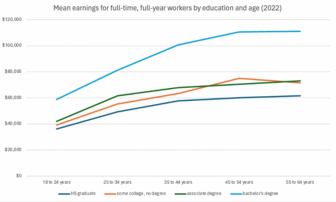Brian Dickerson’s Detroit Free Press column “What Rick Snyder wants most of all” column is highly recommended. It raises all the right questions about what direction the Governor wants Michigan to head in. Using the Governor’s proposal for another big business tax cut – this time the personal property tax – as a key indicator of where the Governor wants Michigan to go, Dickerson writes:
Now, you can certainly make the argument that the personal property tax discourages investment, and that it places Michigan at a disadvantage to nearby states that levy no comparable tax. But the main beneficiaries of its repeal would be capital-intensive industries, whose private investment in new equipment would be incentivized at the expense of public investment in urban infrastructure and higher education — exactly the sort of investment Snyder contends is critical to attracting and retaining skilled young talent. And if talent has indeed displaced “capital resources” (such as factories and machinery) as the “key driver of economic growth” — I quote from Snyder’s own special message on talent — then why would Michigan want to help the latter at the expense of the former?
Exactly the right question. The answer to which will define the direction Michigan policy makers are taking Michigan in: trying to restart a 1.0/2.0 Michigan or towards the Michigan 3.0 the Governor campaigned on. As Dickerson continues:
So the critical question isn’t what Snyder wants, but what he wants most — and which lesser priorities he’s willing to jettison to get it. Snyder’s urgent press to roll back the personal property tax makes a certain amount of sense if his ambition is to compete with Mississippi and other low-wage states for $14-an-hour factory work — and plenty of idled laborers would probably applaud that objective. But if he’s serious about attracting educated talent and participating in the knowledge industry, Snyder has to address the widening disconnect between what he wants now and where he wants to go.
The actions the Administration and Legislature have taken since they came to office in 2011 are far more consistent with competing with Mississippi and other low cost, but also low wage, states for 20th Century jobs and industries, rather than the high wage jobs of the 21st Century economy. Choosing to make the personal property tax cut the next big priority while choosing to continue a decade of cuts in spending on higher education and local governments’ ability to provide quality basic services and amenities further aligns state policy with Michigan 2.0 rather than Michigan 3.0.
Paul Hillegonds (a member of the Michigan Future, Inc. Board) in his must read GVSU The next 50 years in Michigan speech posed the right question: “We all would like Mississippi’s taxes and Minnesota’s social and economic infrastructure, but there is no state in the nation that has both. Which fiscal strategy will we choose?”
If we want a prosperous Michigan again – one with a broad middle class – then we need to choose heading towards Minnesota, not Mississippi. As Paul continued:
What I know is that Michigan’s quality of life and prosperity will depend on a willingness to take risks, to change and think longer term than a short-term election or economic cycle. That change begins with the aspirations we hold for ourselves and our children— and the aspirations we hold for our state and regional communities. I also believe that the successful reinvention of Michigan regions will depend not only on our personal values and innovative private and non-profit sectors, but on public policy and the community investments we make—investments in the assets necessary to keep and attract talent and grow a knowledge-based economy.






